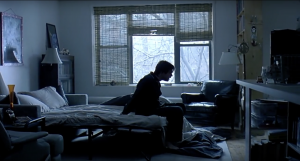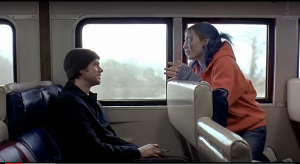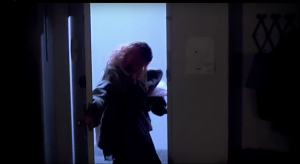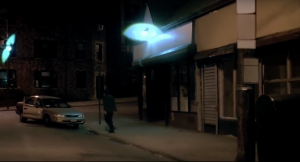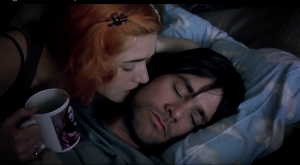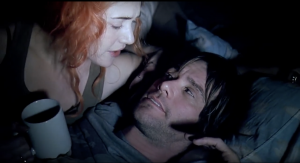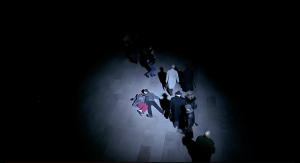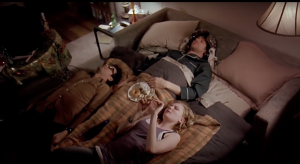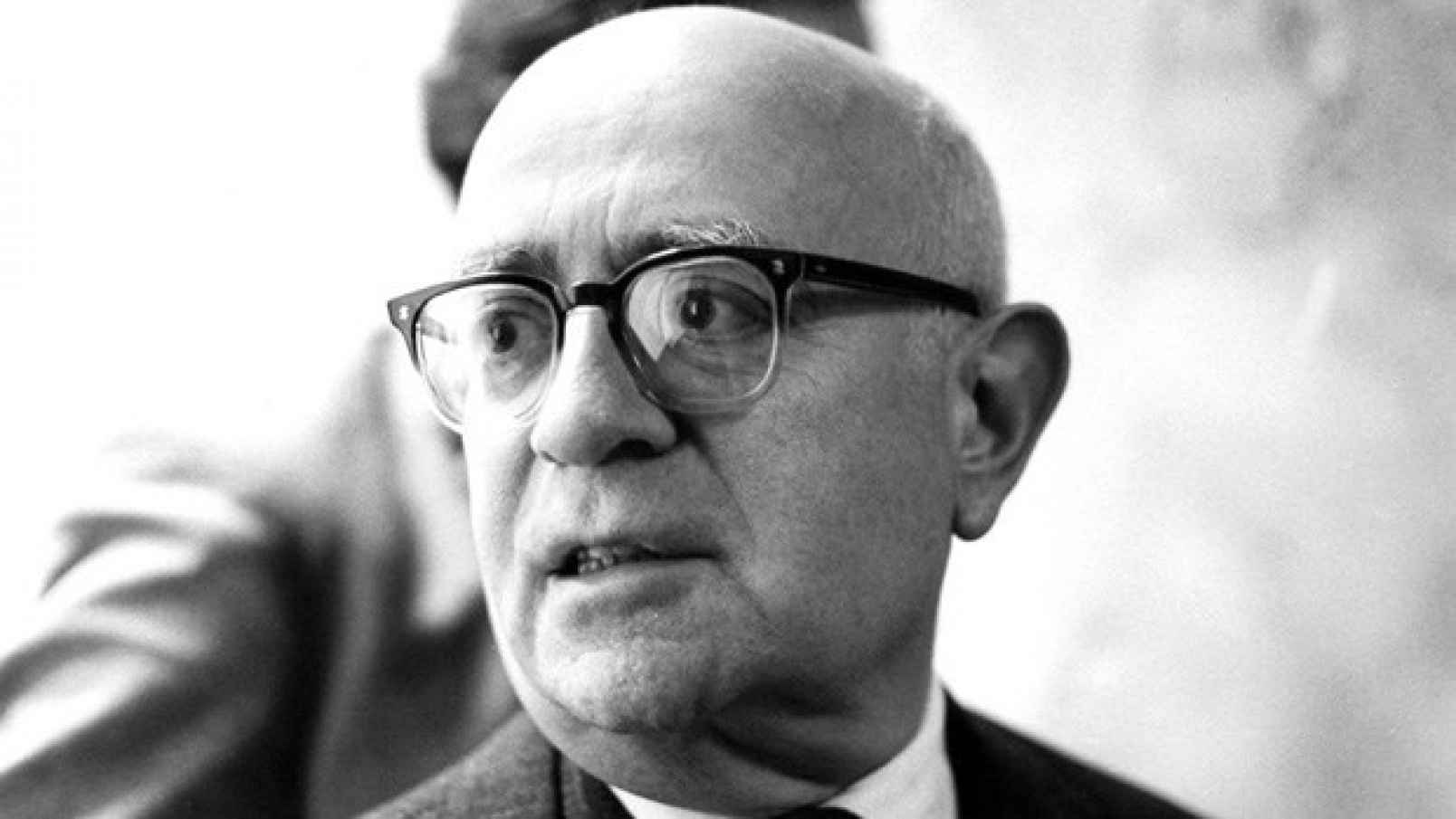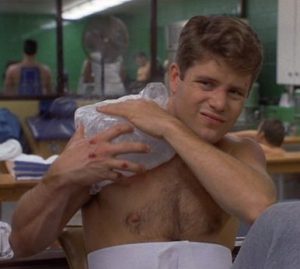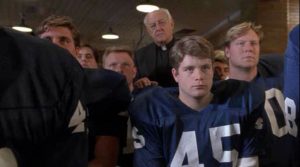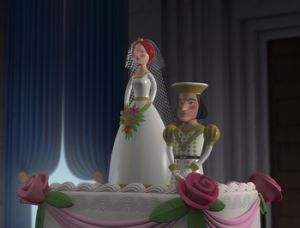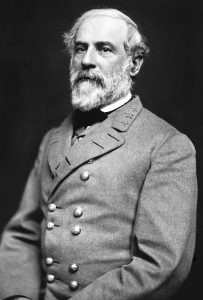
Nothing depicts the American Dream quite like green lawns, white picket fences, and white neighbors. This depiction, for many people, seems like the natural progression of American Society yet we are still recovering from the consequences of this abnormal story. The story of suburbanization and housing is the story of Americans; I Americans and Americans of color. This story is still being determined; through the present distribution of subsidized housing, neighborhood funding of schools, and zoning laws that disproportionately expose communities of color and low-income white folks to harmful toxins. Depending on where you are positioned in the social hierarchy of America based on race, class, gender, and sexuality, your take on each chapter of this story is different from those of another position. For some, the struggle for decent housing is still pending while for others the “good ol’ days” seem to be gone. Enter The ‘Burbs, starring Tom Hanks and directed by Joe Dante, showing the last great strides Anglo-Americans took to preserve their luscious green lawns, as well as their rising property values from, Cannibal doctors? If you follow me through this, I’ll hopefully show you how a seemingly heart-warming film about an average Joe, or Ray Peterson for this matter, protecting his neighborhood from strange new cannibal neighbors is actually a self-atonement for the mistreatment of non-Anglo’s in suburbia during the 60’s and 70’s. Yes, the 60’s and 70’s, of the 20th century, of course, meaning the era when your parents or grandparents were either trying to move into suburbia or trying to keep people out. And, Yes Tom Hanks, the guy we know and love from movies like Forest Gump, Saving Private Ryan, and The Terminal.
The Suburbs, I think, can be analyzed as the last ‘great’ struggle by the Anglo-Americans to maintain their socialized foothold in wealth and racial superiority. I’m not going to argue that this is the only method used, as aspects of white supremacy have, and still manifest itself through the prison industrial complex, school to prison pipeline, food apartheid and many, many more issues. Instead, I am arguing that suburbanization was based on previously conceived frameworks of racism in so far as it also created new foundations for massive disparities in housing, schooling, food, and health access that moved the realm of racism into a seemingly ‘non-racial’ topic.
By the end of the second World War, the American Veterans were returning to a post-war economic boom. The government implemented the 1944 G.I. bill helping aid many veterans in their path towards new careers, college education, and buying their first homes. Suburbanization took off as G.I loans provided low-interest rate and small down payment; As the highways cut through thriving non-white neighborhoods to allow for quick commutes into the city, along with more cars being used with the continual decrease of oil prices, and as Levittowns keep springing up that relied on non-unionized workers building houses in an assembly line fashion created the perfect setting for suburbanization. The American standard of living was rapidly rising. But the same story was not true if you were black. In The Color of Law, Richard Rothstein explicitly shows the condoning and enforcing of neighborhood segregation. The G.I bill, for the most part, excluded non-whites and further engrained the entrance into potential markets for wealth accumulation. Banks did not loan to families in black neighborhoods so they had to buy homes in installment plans, which often lead to numerous evictions. If black families were able to get loans, they could not move into many suburban homes because many of their neighborhoods had racist housing covenants that excluded renting or selling to non-whites. And if they were able to buy disregarding the covenant the local government yielded its power to enforced the racial convents oftentimes evicting residents. But, even after all of that, and a non-white family managed to move into a suburban neighborhood, they faced a lot of social and physical harassment. In the documentary film, Crisis in Levittown, reporters interview residents of Levittown Virginia who are having a black family move into their neighborhood. There are those that support the new family claiming, “They will not bring down property values, the majority; white families, not wanting to buy homes near them will impact the values. The values are determined by the majority no the minority.” While others responded to a similar question by saying they should “get them out” or that they have heard rumors that NAACP had paid them or that the reds had paid them. In the end, the reporter poses a potent question, “If a negro family can afford what you are having, how do you justify your feelings of superiority?”, and Rothensiten makes the claim that “If young people are not taught an accurate account of how we came to be segregated, their generation will have little chance of doing a better job of desegregating than previous ones.” (The Color of Law, 199).
Enter the first iteration of the suburbs though The ‘Burbs, a quite Anglo neighborhood being depicted through Mayfield Place; similar to Mayflower (but this connection might be a stretch) is troubled with some new neighbors who keep to themselves, don’t maintain a nice green lawn, and have strange rituals. They have become the talk of the street without being introduced for the first 15 minutes. The ‘protagonist’ of the film is Ray Peterson, a middle-class male with an entire week’s vacation played by a young Tom Hanks.

Supporting characters are Art Weingartner, the invasive neighbor who is a gun-wielding suburbanite willing to go to any extent to protect his property from the crow that was only bothering him,
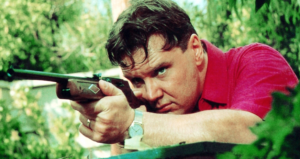
and Mark Rumsfield, a gun-wielding veteran with an intense jealousy of his Walter’s, his neighbor, lawn.

All three men’s whiteness and belonging is not questioned in this suburban setting. The implementation of racist government policies allowed for their exclusive Anglo neighborhood to flourish, while the exclusion of people of color, Jewish people, and other marginal European communities made claims that allowed Ray, Art, and Mark’s presence to go unquestioned. This natural position is juxtaposed with the determination by the viewer and the cast, of the Klopeks’ Foreignness; Ray immediately, after learning his new neighbor’s last name asks, “Klopek, is that Slavic?”. The directors really went out of his way to ensure the Klopek family was embedded with difference, making them strange, dirty, and a family of only men while depicting Ray as the average suburbanite with a wife, child, and dog. Apart from their familial structure, the occupations of the Klopek are unknown. Even after finding out Werner Klopek is a doctor they still question what type of doctor he is and the reliability of his credentials, all while the viewer is given no information about the Mayfield neighbors’ own occupation. To really hit this foreignness home, the three men are depicted as non-Anglo’s; Their accents show their foreignness with the English language, their food shows a less western European tradition with tea being supplemented with sardines; which were eaten by many poor Eastern Europeans, and the Mark keeps calling them the Huns or the foreigners.
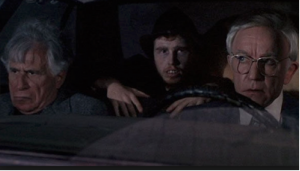
When the Mayfield neighbors see Han, one of the Klopeks, for the first for the first time, the whole street stares at him and Art asks, “what is that?” (14:20). This embedded foreignness grows as the viewer and the Mayfield neighbors start to learn more about the Klopeks. Instead of learning more by uncovering truths, the movie moves us into more suspicion. The Mayfield neighbors witness the Klopeks drive their trash down their driveway in the middle of the night, and then cram it in with a hoe. Ray also sees the Klopeks digging in their backyard in the middle of the night, then Walter randomly goes missing and there is no sign of him. Finally, Ray finds Walter’s wig when they are all are visiting the Klopeks and this convinces them to intrude the Klopeks home while they are away. The only expression of wrongdoing in this situation is Art’s sarcastic comment on “breaking and entering” after Ray breaks the glass of the Klopek’s back door. This form of intrusion is what gets normalized through the film. This is the normalization of white suburbanites being able to re-appropriate the state’s claim to the “monopoly of the legitimate use of violence” early on Ray jokes that the “only thing [they] need to do is to burn a cross on their lawn” (27:00). You already know how that’s not a great joke… The rationalization of the Mayfield neighbors’ intrusion is coupled with the strange action of the Klopeks, leading them to believe the Klopeks killed Walter and will find out for themselves.
When the Klopeks leave for the day, Art, Ray, and Mark break into their home. When they begin to find nothing, Ray gets desperate and keeps digging deeper in the basement until he accidentally penetrates a gas line which explodes the Klopek’s house. By this point, the Klopeks had come back home with the police and find their home burning to the ground. At this point, the first look of sorrow is expressed in the film; Ray might be dead because he was inside the house during the explosion, and the Klopeks lost their house at the hands of nosy neighbors. But somehow Ray manages live through it and Art quickly presses him to tell everyone he found the bodies, and this time Ray snaps,
“Remember what you were saying about people in the ‘burbs, Art, people like Skip, people who mow their lawn for the 800th time, and then snap? Well, that is us! It’s not them. It’s us! WE’RE the ones who are vaulting over the fences and peeking in through people’s windows. We’re the ones who are throwing garbage in the street, and lighting fires… we’re the ones acting suspicious and paranoid… We’re the lunatics. US!!! Not them!!! It’s us.”
And for a second, everything seems solved. The reality seems that the Klopeks really weren’t cannibals and that the paranoid suburbanites are the problem. For a second, the viewer also feels guilty but not more than a second. As soon as Ray is getting settled into the ambulance Dr. Klopek enters and reveals that he did kill people and he needed to kill Ray because he thought Ray saw his skulls. Ray manages to escape and bump open the Klopek’s car trunk full of skeletons proving that once and for all, the actions Ray, Mark, and Art did; nevertheless questionable, justified their actions. And for white suburbanites of the 1980’s, the neighbors of Mayfield became their darling. He is what they were, and just as his harassment was justified, so was theirs’.

